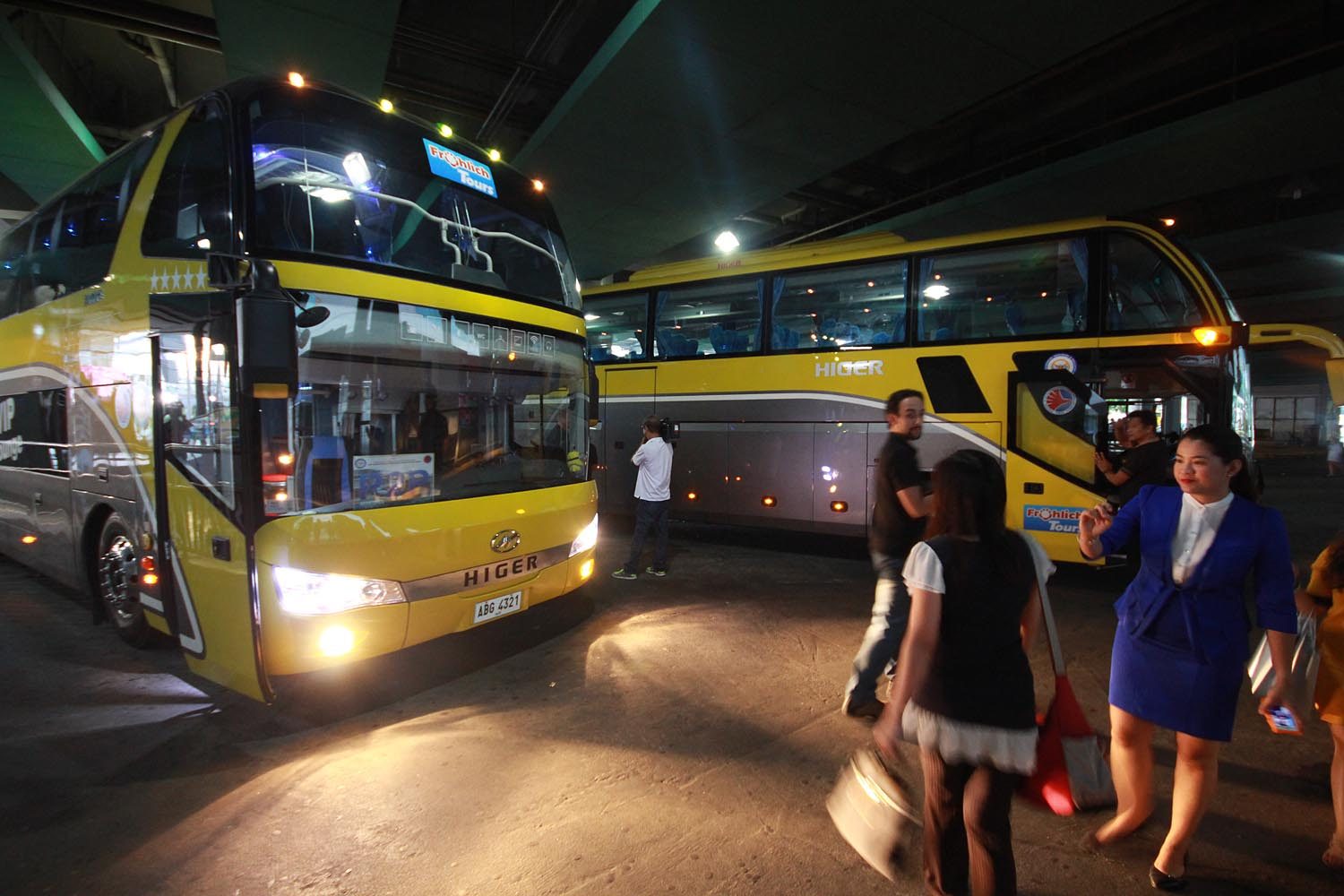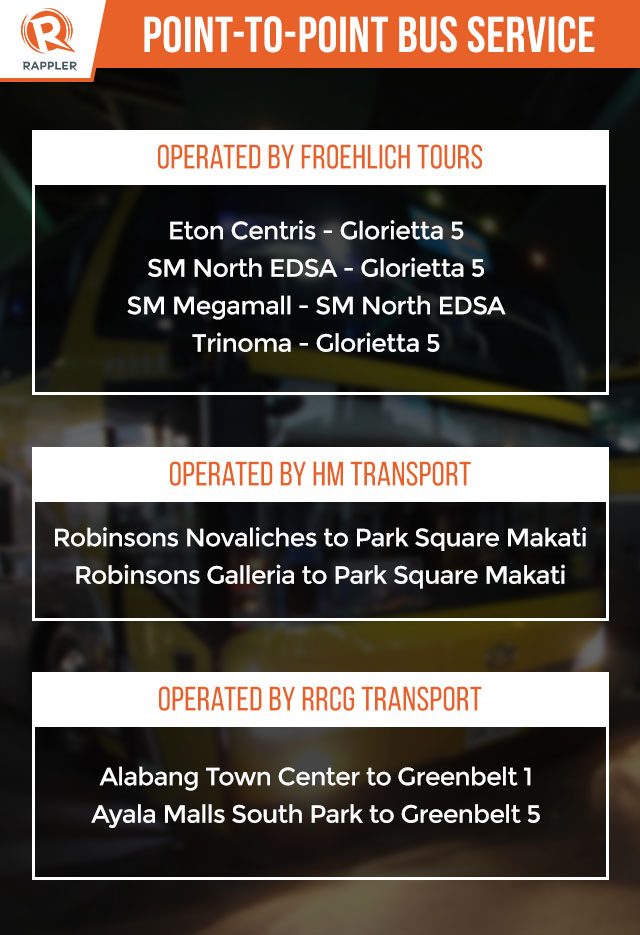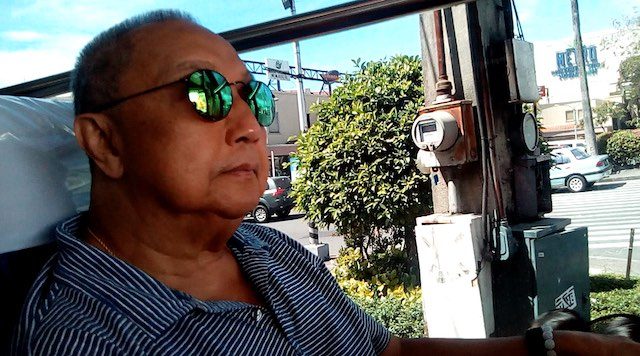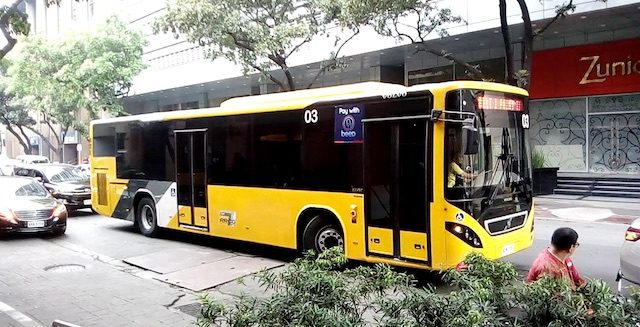SUMMARY
This is AI generated summarization, which may have errors. For context, always refer to the full article.

MANILA, Philippines – Between 2015 and 2016, the transportation situation in Metro Manila seemed to be in a perpetual state of crisis: traffic-congested roads were mainstay visuals in daily news, along with the long queues snaking out of train stations.
Hardly a week went by without the Metro Rail Transit (MRT3)’s constant breakdowns. With city buses full to the brim and the main thoroughfare EDSA choked with vehicles, frustrated commuters were clamoring for better solutions.
The transportation department then tried a tack adapted from Seoul’s successful program that used existing bus infrastructure. In March 2015, the government launched express buses that made only one or two stops along EDSA.
By the end of 2015, this expanded into the point-to-point (P2P) bus service, which made no stops at all and promised to shave off 20 to 30 minutes in travel time. (READ: Double decker bus dry run: ‘Preview’ of modern bus system)
From only 3 routes in end-2015, the P2P service has since expanded to ferry passengers from the north and south ends of the metro and into the central business districts.
Word of mouth and social media buzz piqued the curiosity of commuters willing to pay higher fares – nearly twice as much as ordinary city buses – in exchange for guaranteed seats, premium amenities, and buses that depart on schedule.
Insurance broker Vanessa Buendia has ditched the hot and overcrowded MRT in favor of a comfortable air-conditioned seat in the P2P bus she rides from Ortigas Center to her workplace in Makati City.
While she admits that the train is still the fastest way to get to her office, queueing up alone already consumes a lot of time.
“The MRT is really faster but it’s not comfortable at all…It takes maybe 3 times as long from [getting the ticket] to a ride. But this is really all about the comfort for me,” she said.
More riders
When the P2P service launched in December 2015, a total of 20 buses ran on only 3 routes, linking Trinoma, SM North EDSA, and SM Megamall to Makati City.
Three companies now operate routes from Quezon City and Ortigas Center to Makati City, and from Alabang to Makati City.

When the service first launched, Froehlich Tours had only 15 units for the 2,000 passengers riding their buses every day. Now, they have 48 buses for their 4 routes, and daily ridership has jumped to around 15,000 passengers.
HM Transport, which has a partnership with Robinsons Land Corporation, operates two P2P routes from Robinsons Malls in Ortigas and Novaliches. There are a total of 14 units plying the two routes, with about 1,000 passengers riding each route every day.
What attracted passengers to try the P2P service?
For Froehlich Tours CEO Chris Bauer, the premium amenities not seen in ordinary commuter buses – such as wifi, comfortable seats, and onboard restrooms – may have been the main draw.
“In the beginning, people were already happy to have a scheduled service. Then the next step was bringing in a double-decker bus, then a CR, leather seats, PWD functionalities…so expectations are growing whenever we launch the next service,” Bauer said.
Aside from the premium bus features, the P2P service’s selling point remains its value to commuters who want a cheaper but relatively fast commute.

Jaime Matias, a former general manager of the Makati Commercial Estate Association, owns a car, but now prefers to ride the P2P bus from Alabang Town Center to Makati.
He spends around P1,440 a month by taking bus rides instead of the P4,000 a month he spends in toll fees alone.
“Aside from the convenience, it’s less stress since I’m already a senior citizen. I used to drive before, but now I just sit down,” he said.
Matias also believes that taking the bus can help ease traffic congestion, pointing out that a bus can transport around 60 passengers and can take the equivalent of about 4 cars off the road.
Interconnection, flexibility
While the P2P service has expanded and attracted more riders, it’s a challenge for operators to keep up their services as metro traffic continues to worsen, with private cars and ride-hailing services adding to the congestion.
“Traffic got worse, unfortunately. The number of private cars is increasing drastically…For sure, you need a certain number of these Uber and Grab vehicles, but what I can see right now, from the perspective of a transport operator, it’s getting too much,” Bauer said.
Bauer added that while the Philippines has a lot of transportation options, they don’t interconnect – leaving a large number of vehicles that end up using the same road.
“We are lacking this interconnection service. We have great transportation modes in the Philippines, but they don’t work hand in hand. Right now, buses are plying EDSA, [as well as] Uber, Grab, taxis, jeeps. Everybody is plying the same route up and down,” he said.
To help bus operators work their way around this problem, Bauer thinks government should allow operators to be more flexible in handling the deployment of their units.
Under the current system, franchises are granted based on routes. Operators can’t simply add units to augment an under-supplied route during peak hours, or to pull out under-utilized units during hours with low passenger volume.
“Some people tell us we should add more buses on peak hours, but unfortunately our franchise says a maximum of 48 units for the entire routes. Every unit needs to have a special permit and provisional authority,” Bauer said.
“For example, if today was a low day, instead of 48 buses I would only need 20, and the other 28 can do something else so I’m not congesting [EDSA]. But I have a franchise for 48 units, so I need to run 48 units every day on EDSA, [regardless] if there are passengers or not,” he added.
Transport agencies should also be responsive to changing passenger volume. For HM’s Novaliches route for instance, there seems to be a demand for P2P rides from the Sandiganbayan area.
Darwin Renolayan, regional operations manager of Robinsons Land Corporation, raised the possibility of the buses being allowed to make stops in that area to cater to passengers who could not get to the loading terminal.
“For Fairview areas, it’s easy for them to go to our loading and unloading points. But how about those nearby areas? A lot of passengers there would also like to ride the P2P, but unfortunately we don’t have loading points there. So we actually requested the [transportation department] to allow us to also load in the Sandiganbayan area, because we feel that there’s a good demand of passengers there,” he said.
Bauer, meanwhile, thinks that adding more bus routes is not the way to go for future P2P operations, but to figure out how to plug the gaps in the network.
Instead of putting more P2P routes passing along EDSA, he said these routes should simply be interconnected so that passengers would have to transfer to existing buses that already run on the main thoroughfare.
But Bauer also acknowledged the difficulties in implementing this plan, pointing out the many laws and agreements between the government and transport operators, and the many business interests that would have to be considered.

Future of P2P
With demand increasing, the P2P service looks to be viable in the long run, but Bauer believes this would also largely depend on the operators’ ability to keep the service attractive to passengers.
Making sure the buses run on time is a key priority, since this is one of the main reasons why passengers prefer the P2P service over ordinary buses that don’t have a guaranteed departure time.
But it’s harder than it sounds, because Froehlich has had instances where some of its drivers arrive late or don’t turn up to work at all.
“It’s very hard to find qualified drivers who understand the responsibility they have. They don’t mind if they don’t go to work,” he said.
To address this, the company has had to offer incentives to keep drivers punctual. Froehlich Tours’ drivers can earn an additional P600 a day, on top of their regular monthly salary.
With salaried drivers, well-maintained buses, and passengers who patronize the rides, the P2P bus service can look enticing to transport operators looking to enter the business. But Bauer thinks that high standards should be maintained to keep the service going.
Running P2P buses means more than just branding it as a point-to-point buses; the units themselves must have premium amenities to justify the higher fares and premium bus experience.
“P2P is still a great product for the country. If you give operators the freedom that any operator can interbreed P2P on its own way, it will die. So we have to set standards on operators,” he said. – with reports from Addie Pobre and Cathrine Gonzales/Rappler.com
Check out the fares and schedules on the P2P buses here: Froehlich Tours, RRCG Transport, HM Transport
Add a comment
How does this make you feel?
There are no comments yet. Add your comment to start the conversation.